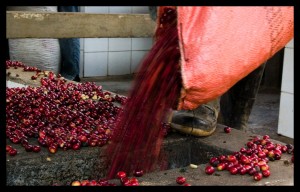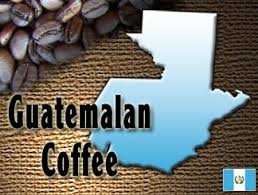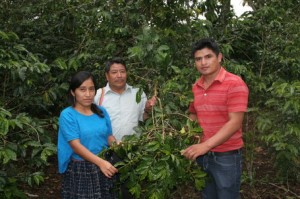One of the largest coffee producers in Central America, Guatemala first started making a name for its coffees in the early 1990s.
Since then the country has continued to grow and expand its theme a “Rainbow of Choices” which has become known to coffee lovers across the world. Even as Guatemalan producers at the moment are facing the worst attack in history of the crop pest leaf rust, coffee lovers need not to worry about the Guatemalan growers’ dedication to quality.
Since coffee started to be planted in earnest in Guatemala halfway through the 19th Century there has been no stopping this Central American nation from making its presence known to the world market. So popular has Guatemalan beans become that it’s hard to make a visit to any retail coffee outlet across all the main consumer markets in Europe, Japan and the United States without finding at least one or two different single origin brands from Guatemala on sale.
Coffee was according to historical data introduced to Guatemala sometime between 1750 and 1760 and from registered exports of about 390,000 bags of 60 kilogram in the mid-1850s coffee production would peak in the 1999-2000 crop cycle when growers produced a record harvest of 5.12 million bags. But a decade of low prices and increasing weather problems has since then brought output to stabilize in a range between 3.5 million and 4.0 million bags.
The outlook for the new 2013-14 harvest has suffered amid the impact of the outbreak of rust disease, a fungus that attacks the tree and causes it to first lose its foliage, which in turn makes it too weak to sustain any flowering or bean development. From average figures of between 3.9 to 4.0 million bags, the official Guatemalan Coffee Association, Anacafe, has said losses may be so severe that the next crop won’t reach more than 2.8 million bags.
“The rust outbreak is very severe, we are talking about direct losses of at least 15 percent in the current 2012-13 harvest as 70 percent of the entire coffee growing area has been hit,” Anacafe President Nils Leporowski said in an interview. The social impact, he said, will be possibly even more severe “because we are not only talking about the loss of harvest but a massive loss of jobs too. We have lost 100,000 direct jobs already and this will affect millions of people.”
But despite the crop losses, few in the industry doubt there will be any impact on the quality of the Guatemalan coffee to reach the export market.
 “Guatemala is the most significant quality producer in Latin America today, in spite of problems such as the climate, they continue to produce exceptional coffee from virtually every grower in Guatemala. Antigua is not the only coffee region anymore, there are the coffees out of Huehuetenango, Coban and Acatenango, which all are exceptional cups,” said Ric Rhinehart, executive director of the Specialty Coffee Association of America, or the SCAA.
“Guatemala is the most significant quality producer in Latin America today, in spite of problems such as the climate, they continue to produce exceptional coffee from virtually every grower in Guatemala. Antigua is not the only coffee region anymore, there are the coffees out of Huehuetenango, Coban and Acatenango, which all are exceptional cups,” said Ric Rhinehart, executive director of the Specialty Coffee Association of America, or the SCAA.
To write an article about Guatemalan coffee without mentioning Antigua almost immediately would be considered close to a crime by coffee fanatics. Located a short 40-minute drive from Guatemala City, the former capital was left in ruins after a series of disastrous earthquakes in 1717 and 1773. But Antigua has remained a famous tourist attraction thanks to its beautiful colonial setting and temperate climate year-round, and it’s still home to some of Guatemala’s most famous coffee as well.
“Guatemala was always famous for the Antiguas, but a little over 20 years ago Guatemalans were only known for the Antiguas,” said Ted Lingle, the outgoing executive director of the Coffee Quality Institute, a non-profit organization based in Long Beach, CA which is dedicated to promote and develop the consumption of quality coffee.
The rich volcanic soil, low humidity, high sun exposure during the day and cool nights which allow for coffee cherries to mature at a balanced pace has since the early beginnings of Guatemala’s coffee history created what Anacafe cuppers describe as an “elegant cup profile” with a balanced aroma and natural sweet taste.


















 CAPS: the new proprietary system using capsules made of 85% recycled aluminium
CAPS: the new proprietary system using capsules made of 85% recycled aluminium